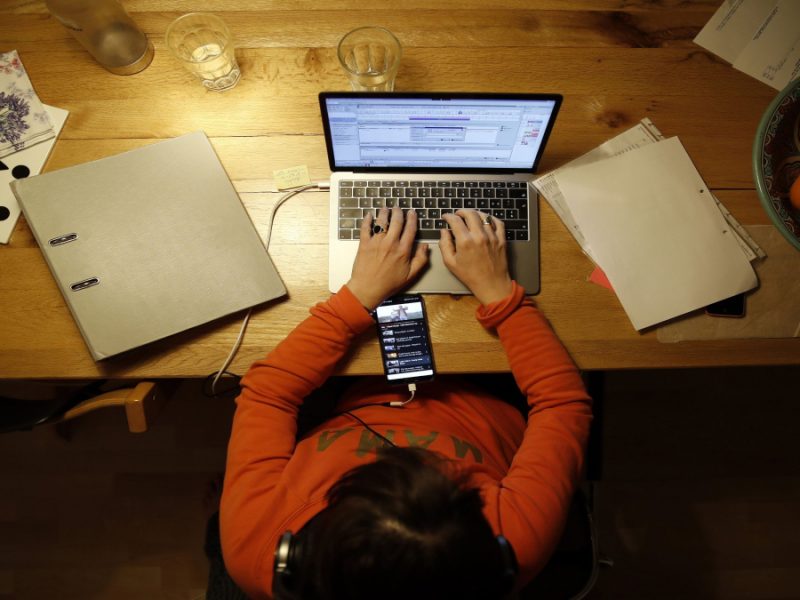A little more than a decade ago, the Internet was not much use for anything beyond browsing a few websites and accessing email services. When we think about the possibilities we have today, it is easier to understand what it is, the so-called Internet of Things.
This digital transformation that we talk so much about, which allows the connection and integration between different devices. In this post, we will talk more about the concept, the applications and the advantages of betting on this model. You will read about:
- What is the Internet of Things?
- How did the term come about?
- Examples!
What is the Internet of Things?
The Internet of Things is a network of connected devices. It not only refers to computers, tablets or smartphones, but also to other equipment such as televisions, cars, stereos, refrigerators, and even entire cities.
We can say that a device that is part of the IoT network (from the original term Internet of Things) is basically a device that can communicate with other systems through a wireless connection – also known as wireless.
This device can transmit data directly to a digital solution, in much the same way as devices connected to the Internet do. The main goal here is to combine the physical and digital worlds.
With devices that communicate with each other, users have more convenience in everyday functions. A good example is an intelligence surveillance camera system, capable of recording and sending the captured images to cloud platforms.
With ample storage capacity and without the risks associated with physical devices, it becomes more difficult to lose saved content.
How did the term Internet of Things come about?
Seeking to connect objects in a technological way has been an idea debated since 1991, when the so-called TCP/IP connection (present in most homes and commercial establishments) and the Internet itself as we know it became popular.
Bill Joy, cofounder of a company known as Sun Microsystems, started to elaborate a Device to Device (D2D) model. This kind of connection was part of a broader concept involving the interconnection of “multiple webs”.
As early as 1999 Kevin Ashton, a researcher at MIT, effectively coined the term “Internet of Things”. Moreover, ten years later he wrote a landmark article with the suggestive title “The Internet of Things Thing”.

According to this expert, the Internet already offered, at the time of publication, about 50 pentabytes of accumulated data – gathered from various sources, such as recordings, data logs, and image reproduction. It is important to say that we have now passed the quintillion mark.
Ashton argued that limited time and routine would cause people to seek new ways to connect to the Internet and connect equipment. According to him, these new experiences would facilitate a far greater accumulation and registration of information than we had until then.
Internet of Things: Some examples!
Okay, now we know the concept, but what about the practical applications? Let’s learn more about them in the following.
Smart cities
Today, more than half of the world’s population already lives in urban environments. Studies show that this proportion will rise even more by 2050. It is therefore crucial for people to make cities sustainable places.
This means dealing with climate change and accelerating population growth. This is where the Internet of Things comes in: In Barcelona, for example, the use of water for irrigation in both public gardens and fountains is already digitally controlled.
Thus, waste is significantly reduced. In addition, public lighting has lampposts equipped with presence sensors, which ensures that they work only when people are passing by.
The Spanish city also has a structure installed on public roads that warns drivers about the best places available to park their vehicles.
Combating food waste
The figures on the subject are alarming: almost one billion people still suffer from hunger and malnutrition in underdeveloped countries. In addition, about one third of the food produced annually ends up being wasted.
The data are from FAO, a special UN body dedicated to investigating information about the world’s food supply. The problem can be combated directly with the use of the Internet of Things implemented in the rural environment.
One possibility is the digital monitoring of irrigation and soil fertilization procedures, with optimized reports being provided to farmers. This work is already done by an Israeli startup known as Prospera.
The organization also has management software developed so that farmers can manage their sales and avoid losses in the transportation of goods.
Reducing Pollution
Managers of urban environments that suffer from high levels of pollution have been successful in transforming air quality. In London, for example, about 9,000 people die each year from respiratory problems. In this context, the company Drayson Technologies has passed on to the inhabitants some devices dedicated to measuring the levels of impurity.
These devices are connected to cars and bicycles, in an ingenious solution, since they will be able to circulate freely in the city. From there, the sensors pass the information directly to the company’s app.
The app gathers the information on a server, which allows Londoners to check a digital map containing up-to-date data on air quality in every point of the British capital.
Efficiency in the agricultural sector
This example is important because it involves Brazil. Some national startups, such as Agrosmart, are able to install, in the plantations, some meteorological sensors designed to point indicators related to solar radiation, barometric pressure, wind direction, among other factors.
The mapping is done with drones, which can present, in real time, information about the use of the extension of the soil – which is fundamental to combat droughts and avoid losses.

